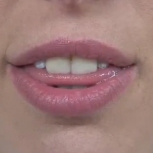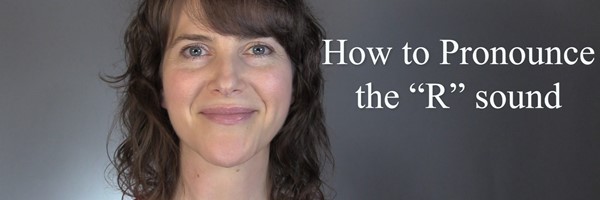This is Part Two of the Top 5 Problematic Sounds in American English. As I mentioned in the previous blog, your native language may differ from another person reading this blog, so these sounds may or may not be challenging for you. But based on my experience with accent modification, most people have difficulties with these same 5 sounds, regardless of their native language. So let’s continue with the next sound: The TH sound.
The TH sound is relatively unique to English, and when I introduce this sound to many of my beginner students, they are surprised at the way it is articulated. “You stick your tongue out like that?” And I answer, “Yes...and I don’t know why. That’s just the way it is!”
The TH sound is in the words the, three, breath, and mother, and it is represented in the IPA (International Phonetic Alphabet) by these symbols: /θ/ for the voiceless TH sound, and /ð/ for the voiced TH sound (we’ll talk about voicing a little later).
The TH sound is unique because of the placement of the tongue when you say this sound. It’s going to feel strange when you do this, but trust me - this is how it’s done! To make the TH sound, place the tip of your tongue between your top and bottom teeth. Once the tip of your tongue is sticking out between your top and bottom teeth, lightly place your top teeth down onto your tongue. It should look like this:

Now that you know the tongue placement, let’s talk more about voicing. Voicing refers to the vibration of your vocal cords - either your vocal cords are vibrating, or they are not. And the difference between the two TH sounds /θ/ (three) and /ð/ (the) is voicing.
To understand the concept of vocal cord vibration, try this quick exercise. Place your hand on your throat and breathe. What do you feel? You should feel...nothing. While you’re breathing, your vocal cords are wide open, and air is just passing through unobstructed. Now keeping your hand on your throat, say the word “hot” and hold out the first sound “hhhhh”. You should feel no vibration of your vocal cords - just the air is moving. This is the same airflow that you use for the voiceless TH sound /θ/.
Now say the word “me” as you keep your hand on your throat. What do you feel this time? You should feel vibration or movement of your vocal cords. When a sound is made with the vocal cords vibrating, we call it a voiced sound. The word this is made with the voiced TH sound /ð/. You should feel vibration in your throat when you say that first TH sound.
Now you understand the concepts of tongue placement and voicing, let’s start practicing. Place your tongue between your teeth like is shown in the picture above. To make a voiceless TH sound, blow air out of your mouth and direct the airflow through the space between your top teeth and tongue. If the air flows out the sides of your tongue, it will sound like a lisp (think Sylvester the Cat).
To make the voiced TH sound /ð/, all you need to do extra is turn on your vocal cords, or make them vibrate. When you do this, you should feel a vibration not only in your throat but also between your top teeth and tongue where the airflow is moving. If there isn’t vibration happening there, then it will sound like an L sound.
Listen to a few words with the voiceless TH /θ/ sound: think, three, breath, mouth.
Listen to a few words with the voiced TH /ð/ sound: the, this, either, mother.
And I'd love to hear from you - contact me to learn how we can work together to perfect your American English pronunciation! And stay tuned for upcoming blogs about the next 3 problematic sounds in American English.
******************************************************************************************************
Interested in more American English pronunciation practice? Be sure to check out some of my most popular online resources (all free!):
- Dark L and Light L exercises: Free, downloadable and printable pdf
- Semi-Occluded Vocal Tract (SOVT) exercises: Free, downloadable and printable pdf
- Stressed and Unstressed Syllables exercises: Free, downloadable and printable pdf
- AH /ɑ/ and UH /ʌ/ Vowel pronunciation exercises: Free, downloadable and printable pdf
- American R /ɹ/ Consonant pronunciation exercises: Free, downloadable and printable pdf
- Vowel to Vowel Linking exercises: Free, downloadable and printable pdf
- Consonant to Vowel Linking exercises: Free, downloadable and printable pdf
- Word Reductions and English Rhythm exercises: Free, downloadable and printable pdf
- N /n/ and NG /ŋ/ Consonant pronunciation exercises: Free, downloadable and printable pdf
- Respiratory and Breath Support exercises: Free, downloadable and printable pdf
- International Phonetic Alphabet (IPA) for English Vowels: Free, downloadable and printable pdf
- International Phonetic Alphabet (IPA) for English Consonants: Free, downloadable and printable pdf
- Resonatory and Vocal Projection exercises: Free, downloadable and printable pdf
- Articulatory and Tongue Twister exercises: Free, downloadable and printable pdf
- Glottal Stop T /ʔ/, Flap T /ɾ/, and True T /t/ exercises: Free, downloadable and printable pdf
- EE /i/ and IH /ɪ/ Vowel pronunciation exercises: Free, downloadable and printable pdf
- Presentation Skills Training exercises: Free, downloadable and printable pdf
- Sentence-level Stress and Content Word Stress exercises: Free, downloadable and printable pdf



